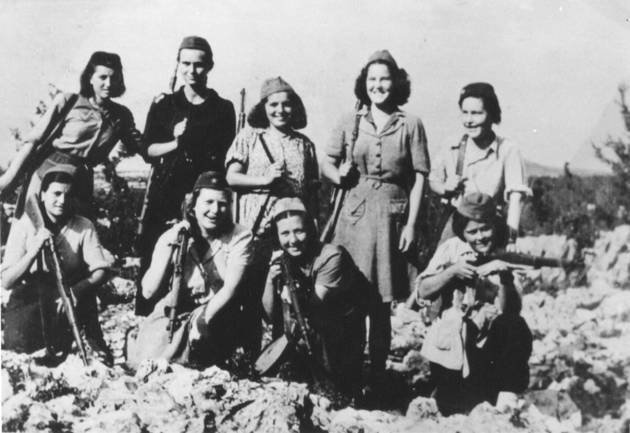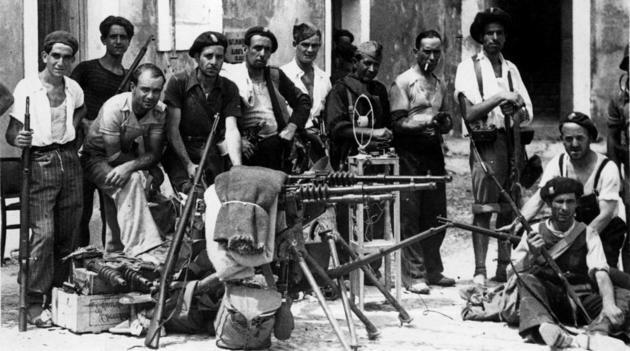Civil war it is the conflict between the members of a political community, be it an empire, tribe, caliphate or republic.
It is also defined as a state's war against a group of opponents (or vice versa) within the same territory.
Unlike war between nations, civil war is a factional struggle within the same group and not against an outside threat.
meaning of civil war
Civil wars have existed at all times in human history. Just remember that one of the causes of the end of the Roman Empire was the struggles between different parts of the empire.

and the german soldiers
Civil war normally takes place when the central power is weakened, leaving room for armed groups to take its place.
Thus, fratricidal fights occur, where the enemy belongs to the same community. However, groups involved in civil war may or may not receive outside help.
Reasons That Cause a Civil War
The reasons for a community to enter into military conflict are varied. From religious reasons, as was the case with wars in the 16th century, to territorial and economic pretexts.
In the 20th century, there are several civil conflicts against the implantation of certain political regimes. Countries like Spain, Russia, Vietnam and Korea enter civil war over political choices.
Civil War Examples
History is full of examples of civil wars. We chose two examples that illustrate well a conflict within the same country.
1. American Civil War or War of Secession
The American Civil War took place in the United States from 1861-1865. In it, two geographic regions clashed, the north and the south. These regions symbolized different ways of life and political ideas.
So when the southern states decided to continue slavery, as opposed to the north, the break was made.
In this way, the southerners opt for secession, that is, for the separation between those that were once the thirteen colonies. They create the Confederate States of America, but no nation recognizes the new country.
The result was a bloody conflict between two groups that shared a common language and a similar colonization history. Both had professional armies, but the civilian population was recruited and targeted.
2. Spanish Civil War

The Spanish Civil War (1936-1939) was one of the most important armed conflagrations of the 20th century. It was considered a rehearsal of World War II, as fascists, liberals and communists faced each other on the battlefield.
The struggle divided Spain between those who defended the republican government installed in 1931 and those who wanted to overthrow it, the nationalists.
The feud lasted three years and the nationalists, led by Franco and supported by Germany and Italy, were victorious. Thousands of Spaniards died and dozens of republicans had to go into exile.
Civil War and Genocide
Another serious manifestation of civil wars is the extermination of a particular population. From World War II, after the Holocaust, such situation was called genocide.
Genocide is presented by those who commit it as a defense. A state that attacks a particular religious or ethnic group claims that its integrity is being threatened and thus commits real atrocities.
In the 20th century, several civil wars used genocide as a battle tactic against the population. One example is the Rwandan War (1994), when the population tutis was massacred by Hutus.
Also, during the Yugoslav Civil War, Croats and Serbs, Bosnians and Muslims killed each other and used rape to promote ethnic cleansing. In this way, several Bosnian women were raped by Serb soldiers, so that they became pregnant and bore Serb children.
In Iraq, Saddam Hussein did not hesitate to attack the Kurds, claiming that they had allied themselves with an external enemy that threatened Iraq.
The Geneva Convention and the Civil War

Author: Armand Dumaresq
Contrary to what it may seem, in a war there are a series of rules that are agreed upon by the opponents.
In order to enforce these laws, the Swiss Henri Dunant (1828-1910) summoned the nineteenth century powers to meet in the city of Geneva, Switzerland, with the purpose of discussing the limits of war.
His priority was to protect the civilian population and prisoners. Thus, the Geneva Convention emerged, from which several international treaties were drawn up between 1864 and 1949.
The Geneva Convention establishes rules such as:
- The civilian population and their livelihoods cannot be attacked;
- the Red Cross and Red Crescent are prohibited from being targets of aggression;
- doctors and nurses cannot be prevented from carrying out their work;
- prisoners of war must be treated with dignity, provided with food and water;
- chemical weapons and land mines are prohibited.
These treaties are constantly revised to be in tune with new technologies and forms of combat.
Curiosities
- THE War in Syria, a conflict that continues to unfold in 2018, is considered an example of an ongoing civil war.
- Despite being silenced in our history, Brazil had several examples of civil war, such as the conflicts in the Regency Period and even in the 20th century with the 1932 revolution.
read more:
- Vietnam War
- Korean War
- Russian Revolution (1917)
- War of the Two Roses
- Governing Period
- Greatest Dictators in History
- Terrorism
